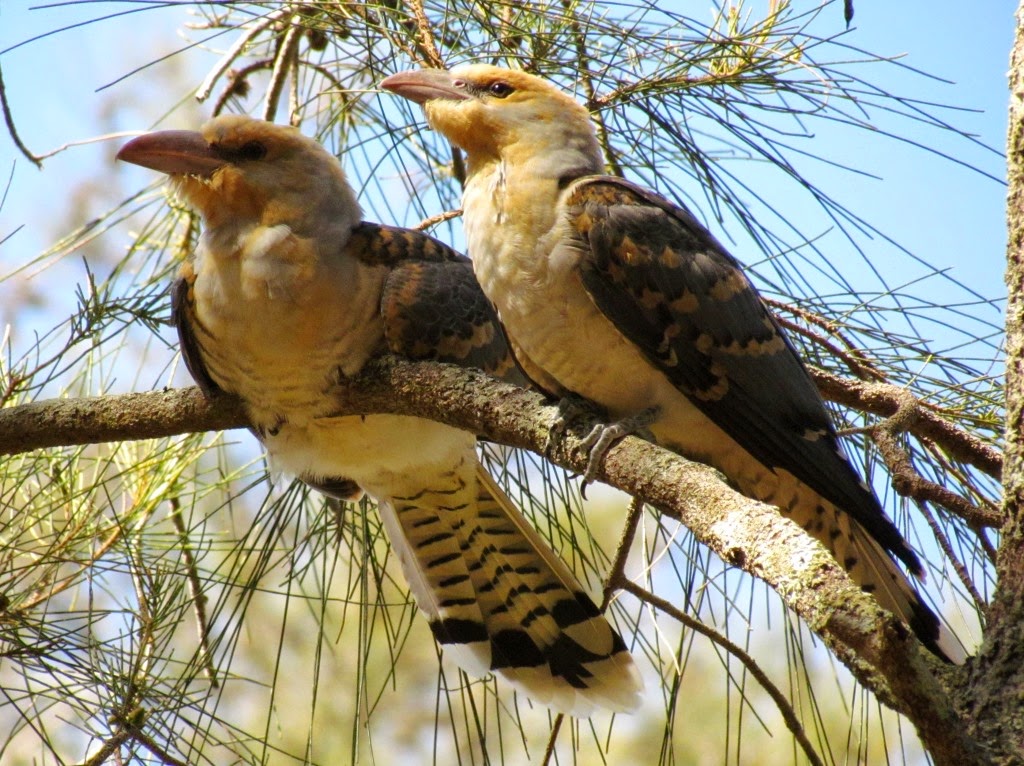You know summer is not far away when you hear the strident repeated call of a Channel-billed Cuckoo Scythrops novaehollandiae as it arrives from the winter home in the north of tropical Australia or New Guinea and Indonesia.
This morning one went screeching by being pursued by a couple of magpies that were trying to drive it out of their territory. It perched for a short time allowing a photo before heading off to look for a suitable nest.
As the world largest cuckoo it generally picks on large birds like magpies, ravens, crows and currawongs as having the most suitable nests in which the female can deposit her eggs.
The young cuckoos don't bother pushing the host nestlings out they just dominate the food supply so most often the hosts young don't survive.
The photo below is of a pair of young from last seasons hatching, in a nearby location. The mottled brown variation in the plumage colouring is typical of the young. This pair (about 50% bigger that their host parents) were incessantly demanding food from a pair over very overworked magpies.

















